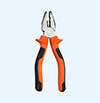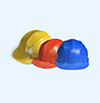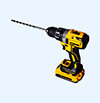| Alloy |
Applications |
| 90-10 and 70-30 Cu-Ni |
Seawater cooling and firewater systems, heat exchangers, condensers and piping, platform riser and leg sheathing, boat hulls, oil coolers, hydraulic tubing, antimicrobial touch surfaces. |
| Cu-30Ni-Cr |
Forgings, cast seawater pumps and valve components. |
Copper fire sprinkler pipe costs more, but proponents insist the benefits outweigh the price
Copper is a strong, durable, malleable metal that’s been used in fire sprinkler piping since 1961. Although it has the highest initial installation costs, copper’s proponents say its longevity, natural resistance to corrosion, and prevention of capacity loss—meaning more water can continue to flow through the pipe—outweigh the higher pricing.
Copper’s inherent resistance to corrosion and bacterial growth minimize scaling within sprinkler pipes, usually enabling the full measure of a tube’s internal diameter to remain constant throughout its lifetime. The oxide film that naturally forms on the inner surface of copper tubing creates a protective barrier, eliminating the need for frequent system flushing to prevent corrosion build up and clogging.
This consistently smooth internal surface provides less frictional resistance than steel pipe, bestowing copper with a C-factor of 150. The hydraulic C-factor measures the roughness on the inside of pipes and its ability to impede water flow. As a result, there’s no need to increase material costs by oversizing copper pipes to compensate for the diminished flow capacity that corrosion can cause over time, which is often necessary for steel.
 Cutting Pliers 1 x $80.00
Cutting Pliers 1 x $80.00 Safety Helmet 1 x $120.00
Safety Helmet 1 x $120.00 Jack Hammer Drill 1 x $230.00
Jack Hammer Drill 1 x $230.00


